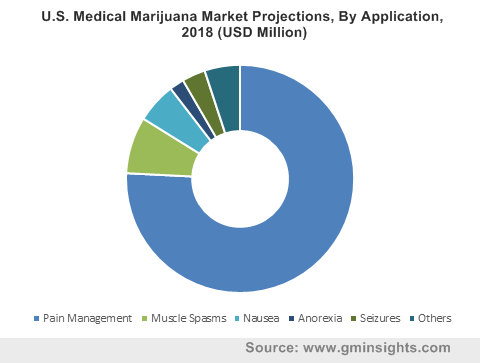Unveiling U.S. medical marijuana market outlook in terms of the regional spectrum: Michigan to emerge as a prominent revenue pocket over 2018-2024
Publisher : Fractovia | Published Date : 2018-11-01Request Sample
The U.S. medical marijuana market has been experiencing robust momentum lately owing to the escalating use of marijuana in the nation for the treatment of various medical conditions. Incidentally, medical cannabis has found to treat a slew of disorders such as anxiety, depression, muscle spasms, cancer, HIV/AIDS, neurology, seizures, and nausea. On these grounds, a total of 31 U.S. states including the District of Columbia, Puerto Rico and Guam now allow for comprehensive public medical marijuana and cannabis programs, according to the U.S. National Conference of State Legislatures (NCSL) 2018 report. The study also claims that approved efforts in 15 U.S. states allow the use of low Tetrahydrocannabinol (THC), high cannabidiol (CBD) products for medical reasons in limited situations or as a legal defense, that would certainly serve to push U.S. medical marijuana market trends.
North East Medical Marijuana Market, By Application, 2013 – 2024 (USD Million)

Enumerating a regional outline of U.S. medical marijuana industry
Michigan
Michigan is expected to be one of the most lucrative regional hubs for U.S. online medical marijuana market. Recently, Michigan passed a mandate that will make it easy for medical marijuana patients and their doctors to complete their registrations and renewal processes online. It is however, made available only to patients without caregivers – that is to say, around 69% of Michigan’s medical marijuana patients. Nonetheless, the initiative is expected to augment the region’s stance in U.S. medical marijuana market.
Michigan is incidentally one of the 30 states that has legalized medical marijuana. As per reports, there are currently 289,205 medical marijuana card holders in Michigan. The state also plans to speed up the process of providing registry cards to medical marijuana users by shifting from snail mail to an online portal. Additionally, Michigan has approved 11 new conditions for treatment with medical marijuana, including autism, arthritis, and chronic pain. Driven by the efforts of the regional government, Michigan is anticipated to account for quite some share of U.S. medical marijuana market in the years ahead.
Pennsylvania
Pennsylvania is another profitable growth avenue for the U.S. medical marijuana market. One of the pivotal factors contributing to the growth of U.S. medical marijuana market from Pennsylvania is the easy availability of the drug in dispensaries. As per the Pennsylvania Medical Marijuana Act, patients who are state inhabitants and are certified by a physician as having a serious medical condition can get medical marijuana from dispensaries. Reportedly, the York County in the West Manchester Township of Pennsylvania also witnessed the set-up of its first medical marijuana dispensary earlier this year. It is thus rather overt that the regional medical marijuana industry will accrue much of its valuation from the dispensaries’ distribution channel.
Incidentally, the U.S. medical marijuana market from dispensaries was valued at $2,144.3 million in 2017 and is likely to grow at an appreciable pace over 2018-2024.
Quite a sizable proportion of the U.S. medical marijuana market share can be attributed to the demand of the product for anxiety disorders. Apparently, costs for anxiety disorder treatment in the U.S. stand at over $40 billion a year. Considered to be one of the most common mental illnesses in the U.S., anxiety disorders impact 40 million adults, according to the Anxiety and Depression Society of America (ADAA) reports. This constitutes about 18% of the entire population, while just about one-third of them seek treatment.
Apparently, since medical marijuana serves as a promising alternative to anxiety medication without any typical side effects, it is considered one of the most viable treatment methods. Quite overtly, the rising number of anxiety disorders in the region will add a major impetus to the U.S. medical marijuana market.
One of the slightly restraining factors that would hamper the growth of U.S. medical marijuana market is the number of side effects caused by consuming marijuana based medicines. Consuming marijuana products containing high levels of THC as a treatment alternative may lead to side effects such as anxiety and paranoia, and in rare cases, an extreme psychotic reaction, including delusions and hallucinations which require urgent medical treatment.
However, the side effects only hold good in the event of an over dosage. In this regard, the U.S. government has been conducting awareness programs to enumerate the importance of consuming the precise dosage of cannabis infused drugs. Regulatory authorities have even been ensuring that physicians and drug providers deliver patients with accurate instructions of product consumption. Powered by a highly supportive regulatory landscape, U.S. medical marijuana market size is anticipated to cross $8 billion by 2024.